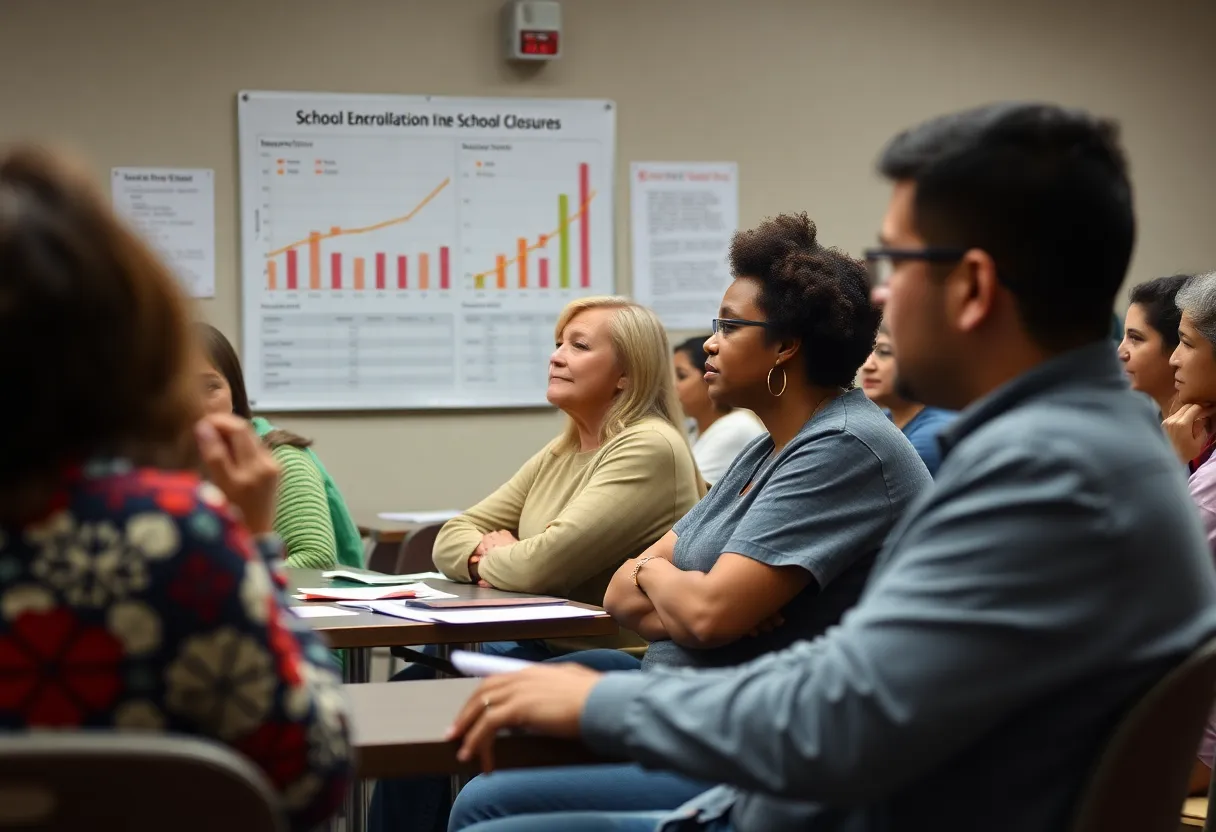Tucson, October 5, 2025
Amphitheater Public Schools in Tucson plans to close up to five elementary schools due to declining enrollment and funding shortages. This controversial decision has sparked outrage among families, leading to protests and a petition with over 2,000 signatures. Community members worry about the emotional impact and potential inequalities that the closures may create. The district is scheduled to vote on the matter in November 2025, with plans for community forums to discuss the implications of these changes.
Tucson, AZ – School Closures Spark Community Backlash in Amphitheater District
Amphitheater Public Schools in Tucson has announced plans to potentially close up to five elementary schools before the start of the 2026-27 school year. The decision stems from ongoing challenges with declining enrollment and funding shortages, forcing the district to consider consolidations to reduce operational costs. This move has ignited strong reactions from families across the community, who packed a recent meeting to voice their concerns and opposition.
The district’s strategy focuses on merging resources from under-enrolled schools into more sustainable facilities. Officials have emphasized that these changes aim to preserve educational quality while addressing financial constraints. However, parents have highlighted the emotional and practical impacts, describing the affected schools as vital centers for neighborhood cohesion. Many families, particularly in lower-income areas, depend on these schools for their proximity, allowing children to walk or bike to class safely.
Community Response and District Countermeasures
At the community meeting, attendees expressed deep frustration over the proposed closures. The atmosphere was charged with worry about disrupted routines and the potential loss of local support networks. Critics argue that consolidating schools could exacerbate inequalities, as families without reliable transportation might face longer commutes and reduced access to education. This concern is especially pronounced in Tucson‘s diverse neighborhoods, where public transit options are limited.
In response, Superintendent Brian Johnson outlined several support measures to ease the transition. These include potential enhancements to transportation services, such as additional bus routes or subsidies for affected students. The district is also exploring ways to maintain community programs at consolidated sites to keep essential services intact. Despite these assurances, skepticism remains high among residents who feel the proposals overlook long-term community needs.
A grassroots effort has gained momentum, with a petition circulating that has already collected more than 2,000 signatures. The document urges district leaders to pause and reassess the closure plans, advocating for alternative funding solutions or enrollment-boosting initiatives. Organizers hope this public pressure will influence the decision-making process ahead of the upcoming board votes.
Timeline and Next Steps
The Amphitheater Public Schools governing board is scheduled to vote on the closures in November 2025. In the lead-up, the district plans to hold additional forums to gather input from stakeholders. These sessions will cover details like which specific schools are under consideration and how consolidations would be implemented. Enrollment data from recent years shows a steady decline, with some elementary schools operating well below capacity, contributing to per-student funding shortfalls under Arizona’s state financing model.
Funding issues in public education are not unique to Tucson, but local districts like Amphitheater face acute pressures from population shifts and economic changes. The closures, if approved, would mark a significant restructuring, potentially affecting hundreds of students and staff members. The district has committed to minimizing disruptions, including phased transitions and support for displaced employees.
Broader Context of Educational Challenges
Declining enrollment across Tucson schools reflects larger trends in urban education, where families are moving to suburbs or opting for alternative schooling options. This has squeezed budgets reliant on state allocations tied to student numbers. Amphitheater’s proactive approach to consolidation aims to redirect savings toward core classroom needs, such as teacher retention and updated curricula.
Yet, the human element cannot be understated. Neighborhood schools often serve as more than just educational hubs; they foster social ties and provide stability for young learners. As the November votes approach, the community watches closely, hoping for a resolution that balances fiscal responsibility with the preservation of local identity.
The situation underscores the delicate interplay between administrative necessities and community values in public schooling. With input from parents and educators shaping the path forward, Amphitheater Public Schools stands at a crossroads, poised to adapt amid evolving demands.
(Word count: 628)
Frequently Asked Questions (FAQ)
What is the main reason for the potential school closures in Amphitheater Public Schools?
Amphitheater Public Schools announced potential closures of up to five elementary schools ahead of the 2026-27 school year, citing declining enrollment and funding shortages.
How has the community responded to the announcement?
Parents at a packed community meeting expressed outrage and heartbreak, with the schools described as the neighborhood’s heart. A petition with over 2,000 signatures calls for reconsideration.
What alternatives has the district proposed?
Superintendent Brian Johnson promised alternatives like transportation aid to support affected families.
When will the final decision be made?
Board votes are set for November.
Who might be most impacted by these closures?
Critics argue it disadvantages low-income families reliant on walkable access.
Key Features Overview
| Feature | Description |
|---|---|
| Number of Schools Potentially Closing | Up to five elementary schools |
| Timeline | Ahead of the 2026-27 school year; board votes in November |
| Reasons | Declining enrollment and funding shortages |
| Community Action | Petition with over 2,000 signatures; packed community meeting |
| District Response | Plans for consolidations to save costs; transportation aid promised |
| Key Concerns | Disadvantages low-income families reliant on walkable access |




